Here at Blue Summit Supplies, we get lots of questions about types of paper, from printer to copy, from questions about type and size to questions about paper thickness. So if you’ve got questions about paper, you’re not alone! In this article, we’ll walk you through all the ins and outs of that most versatile of office supplies and help you find what’s right for the job. Channel your inner Dunder Mifflinite and let’s get started! (And maybe get prepared for a few Office quotes along the way…)
How is Paper Made?
Before we get into all the different types of paper available to you, let’s start at the beginning. How is paper actually made?
First, fibers are extracted from a variety of forestry products, usually trees. Then, those fibers are pounded into pulp. The pulp is then mixed with water and put on a paper-making mechanism where it is flattened, dries, and cut into sheets and rolls. But it’s important to note that not all paper starts from tree pulp! Some comes from cotton and other textile fibers while other paper starts out as recycled fibers, like pre- and post-consumer waste.
Or, as Dwight Schrute put it, “Let’s start…from the ground up. Where does paper come from? Trees! And where do trees grow? Soil.”
But don’t worry…we’re not about to give you an in-depth lesson about the topsoil where the trees that made your paper grow. We’ll leave that kind of pontification to Mr. Schrute…

Qualities of Paper
These days, paper types come in countless different varieties, with many different qualities you need to consider in order to know which is right for your needs. The top qualities to consider are:
- Size
- Weight
- Brightness
- Material
- Coat
Of course, there are other attributes, like color or different specialty types. And, like Jim Halpert said, we can’t assure you than any paper is less flammable, but certainly that it’s not more flammable.
But anyway, for most of your office needs, the above list is going to have you covered. We’ll get into the specifics of some of these below.
Types of Paper and Their Uses

Bond Paper
While most types of paper are made from wood pulp, bond paper is actually made from rag pulp or textiles. This means that this paper is stronger and more durable than most, making it ideal for letterheads, reports, and stationary.

Cardstock
Cardstock, which can come in many different coats and finishes, is another thick variety of paper. However, being made from a blend of hardwood and softwood material, it is more rigid than bond paper. Typical uses for cardstock include business cards and report covers.

Copy Paper
Copy paper is one of the most versatile types of paper, adaptable to most printers and copiers and available in a plethora of options for size, weight, color, and brightness. It is usually one of the thinner and cheaper options for paper, making it ideal for your everyday office printing needs.

Inkjet Paper
Inkjet paper is specifically designed to absorb the intense inks used during the inkjet printing process. This paper is lighter than cardstock but more robust then copy paper. What’s more, photo paper is a subset of inkjet paper, used specifically for printing photographs. Even though you can use normal copy paper with an inkjet printer, the results may be suboptimal. Consider using this type of paper if you’re working with an inkjet printer.

Laser Paper
Laser paper is similar to inkjet paper in that they both are purposely formulated for a specific type of printer: in this case, a laser printer. Again, you can use normal copy paper for a laser printer, but the results will look better on laser paper. Laser printers use heat and special color-infused rollers to print and this process works much better with laser paper.
Paper Dimensions
Now that you understand the different types of paper out there, let’s get into the most commonly used dimensions of printed paper. While there are many sizes of paper, three of the most common are listed below:

Letter
8.5” by 11”, or “Letter” size, is the most common size paper for printers. You can think of the Letter as standard paper dimensions.
Legal
8.5” by 14”, or “Legal” size, is the same width as letter paper but slightly longer. This type of paper is often used for (you guessed it) legal documents, including contracts and account statements.
Ledger/Tabloid
Ledger, also known as tabloid, paper dimensions are 11” by 17”. This size paper is equal to two letter-sized papers, lying upright next to each other. This size is often used for diagrams illustrations that would not fit on smaller sheets, like CAD drawings or newspapers.
Need to know a more specific paper size, like A4 paper dimensions? Paper comes in many more sizes than the three listed above. Below, we’ve included a handy chart that will give you the dimensions of every size of paper, from A0-A10.
|
Letter Type |
Letter Size in Inches |
Letter Size in MM |
Paper Uses |
|
Letter |
8.5 x 11 inches |
215.9 x 279.4 mm |
● Printer paper ● School work ● Office documents ● Meeting notes ● Resumes |
|
Legal |
8.5 x 14.0 inches |
216 x 356 mm |
● Legal contracts ● Excel spreadsheets ● Real estate deals |
|
Ledger |
11.0 x 17.0 inches |
279 x 432 mm |
● Drawings ● Diagrams ● Posters |
|
A0 |
33.1 x 46.8 inches |
841 x 1189 mm |
● Window displays ● Computer Aided Design (CAD) drawings ● Posters ● Architectural plans ● Exhibition graphics |
|
A1 |
23.4 x 33.1 inches |
594 x 841 mm |
● Window displays ● Computer Aided Design (CAD) drawings ● Posters ● Architectural plans ● Exhibition graphics |
|
A2 |
16.5 x 23.4 inches |
420 x 594 mm |
● Window displays ● Computer Aided Design (CAD) drawings ● Posters ● Architectural plans ● Exhibition graphics |
|
A3 |
11.7 x 16.5 inches |
297 x 420 mm |
● Posters ● Wall notices ● Architectural plans ● Computer Aided Design (CAD) drawings |
|
A4 |
8.3 x 11.7 inches |
210 x 297 mm |
● Reports ● Essays ● Textbooks ● Letterheads ● Training manuals ● Standard international printer paper |
|
A5 |
5.8 x 8.3 inches |
138 x 210 mm |
● Booklets ● Pamphlets ● Diaries + Journals ● Planners ● Invitations ● Paperback novels |
|
A6 |
4.1 x 5.8 inches |
105 x 148 mm |
● Save the dates ● Invitations ● Postcards ● Cue cards ● Flashcards |
|
A7 |
2.9 x 4.1 inches |
74 x 105 mm |
● Large Post-it notes ● Tickets |
|
A8 |
2.0 x 2.9 inches |
52 x 74 mm |
● Business cards ● Driver’s licenses ● Bank cards |
|
A9 |
1.5 x 2.0 inches |
37 x 52 mm |
● Vouchers ● Tickets |
|
A10 |
1.0 x 1.5 inches |
26 x 37 mm |
● Stamps |
Paper Weight and Thickness
To measure the durability and sturdiness of a piece of paper, you must look at both the weight and thickness together. Paper thickness is usually measured in points, with one point equaling one thousandth, or .001, of an inch. For example, 10-point paper would be .01 inches thick.
As far as measuring weight, the United States typically measures paper in pounds by the ream, or by 500 sheets of that paper. So, if a paper is referred to as “28 pounds,” that means the actual sheet of paper is 28 pounds divided by 500. In general, the higher the weight of the paper, the better quality and more durable it is. 20 or 24 pounds are typical weights for standard copy paper while cardstock might be around 80 or 100 pounds.
Paper Coats
One more quality of your paper you need to consider is the coating. Coating is basically the finish or the texture of your paper and could have a big impact on your finished project or printing job. Below are the three most common types of coats you will find for your paper.

Uncoated Paper
Uncoated paper has no kind of extra coating added from the paper manufacturer, allowing the ink to soak directly into the paper. This type of paper will work best for projects with lots of text or outlined images but won’t work as well for image-heavy documents or high ink value projects, as the lack of coating can cause the ink to bleed and appear muddy.

Gloss Coated Paper
Gloss Coated Paper has a glossy finish applied to it by the manufacturer and thus has a reflective shine to it that will help your images and graphics really pop. As opposed to uncoated paper, the gloss keeps the ink from soaking directly into the paper, making your images crystal clear. Gloss coated is best used for flyers, posters, postcards, and any other projects where your images need to shine.

Matte Coated Paper
Matte Coated Paper has a coating similar to the Gloss Coated, but has a duller, less shiny finish to it. The ink will still sit on top of the paper rather than sinking in but won’t pop as much as the Gloss Coated. This finish is ideal for any kind of project that people might end up writing on, like greeting cards or business cards.
So hopefully by now, you feel like a real paper expert. We’ve taken you through all the ins and outs of paper, from where it all starts to all the options in which you can buy it. There’s so much to choose from, but hopefully with this guide, you’ll have a good idea of where to start.
As Dunder Miflin’s Regional Manager Michael Scott might say, it’s “limitless paper in a paperless world.”
Do you love office talk as much as we do? Follow our office supplies blog for the latest office trends, team building strategies, product comparisons, and more.
If you have any questions or want to talk to someone about office supplies, send us an email or connect with us on Twitter, Facebook, or Instagram.
 For more informative articles about office supplies, subscribe to our email newsletter!
For more informative articles about office supplies, subscribe to our email newsletter!
Never fear, you won't begin receiving daily sales emails that belong in a spam folder. Instead, we promise a fun weekly roundup of our latest blog posts and great finds from across the web. And if you lose interest, it's always easy to unsubscribe with a single click.




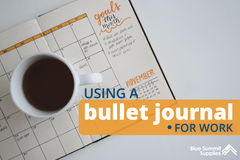


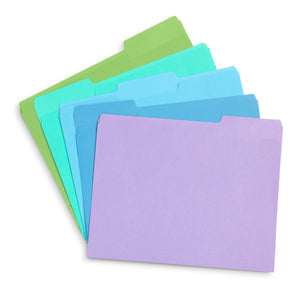
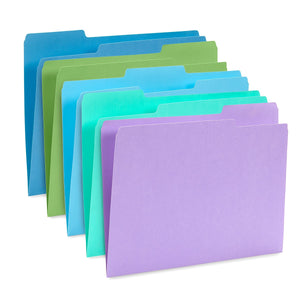
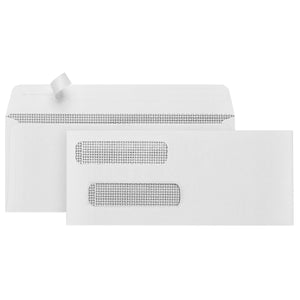
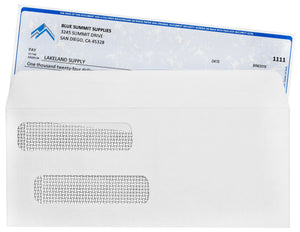
1 comment
Tom McHugh
worked in a office supply store for 30 years, learned more about paper in 5 minutes then in 30 years thank you